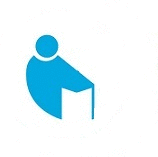Raynaud’s disease
Raynaud’s (ray-NOSE) disease causes some areas of your body — such as your fingers and toes — to feel numb and cold in response to cold temperatures or stress. In Raynaud’s disease, smaller arteries that supply blood to your skin become narrow, limiting blood flow to affected areas (vasospasm).
Women are more likely than men to have Raynaud’s disease, also known as Raynaud’s or Raynaud’s phenomenon or syndrome. It appears to be more common in people who live in colder climates.
Treatment of Raynaud’s disease depends on its severity and whether you have other health conditions. For most people, Raynaud’s disease isn’t disabling, but it can affect your quality of life.
Symptoms
Signs and symptoms of Raynaud’s disease include:
- Cold fingers or toes
- Color changes in your skin in response to cold or stress
- Numb, prickly feeling or stinging pain upon warming or stress relief
During an attack of Raynaud’s, affected areas of your skin usually first turn white. Then, they often turn blue and feel cold and numb. As you warm and your circulation improves, the affected areas may turn red, throb, tingle or swell.
Although Raynaud’s most commonly affects your fingers and toes, it can also affect other areas of your body, such as your nose, lips, ears and even nipples. After you warm up, the return of normal blood flow to the area can take 15 minutes.
Causes
Doctors don’t completely understand the cause of Raynaud’s attacks, but blood vessels in the hands and feet appear to overreact to cold temperatures or stress.
Blood vessels in spasm
With Raynaud’s, arteries to your fingers and toes become narrow and briefly limit blood supply when exposed to cold or stress. Over time, these small arteries can thicken slightly, further limiting blood flow.
Cold temperatures are most likely to trigger an attack. Exposure to cold, such as putting your hands in cold water, taking something from a freezer or being in cold air, is the most likely trigger. For some people, emotional stress can trigger an episode.
Primary vs. secondary Raynaud’s
There are two main types of the condition.
- Primary Raynaud’s.Also called Raynaud’s disease, this most common form isn’t the result of an associated medical condition. It can be so mild that many people with primary Raynaud’s don’t seek treatment. And it can resolve on its own.
- Secondary Raynaud’s.Also called Raynaud’s phenomenon, this form is caused by an underlying problem. Although secondary Raynaud’s is less common than the primary form, it tends to be more serious.
Signs and symptoms of secondary Raynaud’s usually appear around age 40, later than they do for primary Raynaud’s.
Causes of secondary Raynaud’s include:
- Connective tissue diseases.Most people who have a rare disease that leads to hardening and scarring of the skin (scleroderma) have Raynaud’s. Other diseases that increase the risk of Raynaud’s include lupus, rheumatoid arthritis and Sjogren’s syndrome.
- Diseases of the arteries.These include a buildup of plaques in blood vessels that feed the heart, a disorder in which the blood vessels of the hands and feet become inflamed, and a type of high blood pressure that affects the arteries of the lungs.
- Carpal tunnel syndrome.This condition involves pressure on a major nerve to your hand, producing numbness and pain in the hand that can make the hand more susceptible to cold temperatures.
- Repetitive action or vibration.Typing, playing piano or doing similar movements for long periods and operating vibrating tools, such as jackhammers, can lead to overuse injuries.
- Smoking constricts blood vessels.
- Injuries to the hands or feet.Examples include a wrist fracture, surgery or frostbite.
- Certain medications.These include beta blockers for high blood pressure, migraine medications that contain ergotamine and sumatriptan, attention-deficit/hyperactivity disorder medications, certain chemotherapy agents, and drugs that cause blood vessels to narrow, such as some over-the-counter cold medications.
Treatment
Dressing for the cold in layers and wearing gloves or heavy socks usually are effective in dealing with mild symptoms of Raynaud’s. Medications are available to treat more-severe forms of the condition. The goals of treatment are to:
- Reduce the number and severity of attacks
- Prevent tissue damage
- Treat the underlying disease or condition
At Alimran Medical Center, we may recommend any of the following treatments
Regenerative medicine treatment (Prolotherapy)
Steroid injection
- Trigger point injections
- Epidural steroid injections
- Electrical stimulation
- Short and long wave
- Laser therapy
- Ultrasonic therapy
- Magnatic therapy
- Exercises
